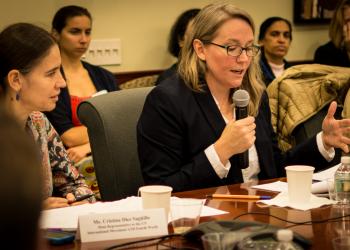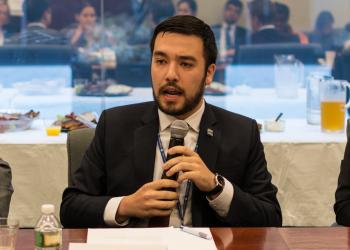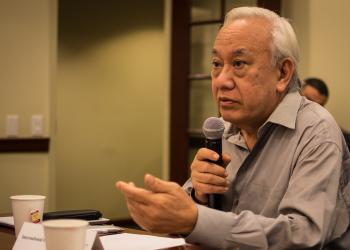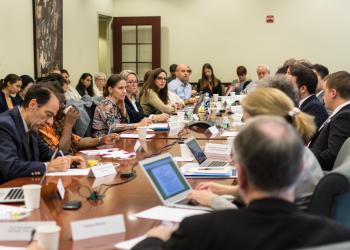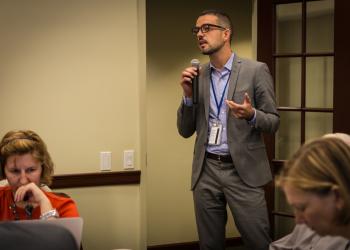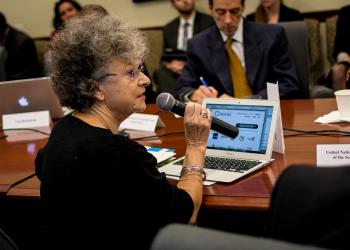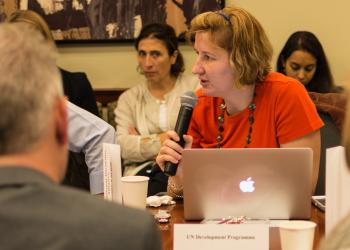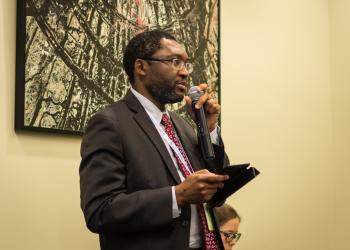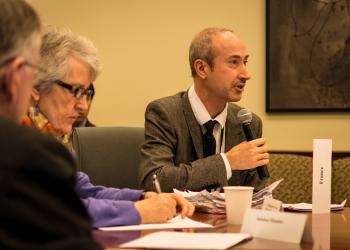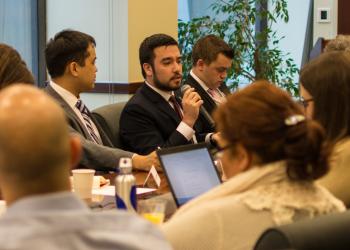Considering how indicators can measure progress on Agenda 2030
One of the reasons the Millennium Development Goals are considered so successful is because of their explicit and measurable goals, such as for achieving universal primary education and eradicating extreme poverty.
The adoption of Agenda 2030 in September indicates a recognition that the world is more complex. While the MDGs had eight overall goals, the new Sustainable Development Goals (SDGs) have 17 – with 169 specific targets overall.
Policy makers recognize, therefore, that they must devise new and effective ways to gauge progress towards achieving the SDGs – which is why the UN Secretary General last year appointed an Independent Expert Advisory Group on the Data Revolution for Sustainable Development (IEAG).
At a meeting in Bangkok in October, the IEAG proposed a set of 223 indicators that can be used to measure progress towards fulfilment of Agenda 2030.
The IEAG process, and the whole question of indicators, was the subject of an informal breakfast meeting on 5 November 2015 at the offices of the Baha’i International Community. It was the 29th such gathering in a series designed to bring together diplomats, UN officials, and civil society representatives to discuss the post-2015 development agenda.
Keynote presentations were made by Linda Hooper of the UN Statistics Division and John Romano of the Transparency, Accountability and Participation (TAP) Network, a coalition of civil society organizations that work for open and inclusive governance in sustainable development policy.
Ms. Hooper opened the meeting, describing in general terms the outcome of the Bangkok meeting, noting that of the 223 goals, 159 were deemed “green” – as having “little or no disagreements.”
One such “green” indicator, for example, would seek to track the “percentage of the population covered by social protection floors/systems disaggregated by sex, and distinguishing children, unemployed, old age, people with disabilities, pregnant women/newborns, work injury victims, poor and vulnerable” as a means of measuring progress towards Target 1.3, which calls for the “implementation of nationally appropriate social protection systems and measures for all.”
Ms. Hooper said the remaining 64 of the 223 indicators were coded “grey,” indicating they need more work before consensus is achieved, and that “the exact formulation of what the indicators will be needs more research.”
One such “grey” indicator, for example, simply suggests there is need for “an indicators that measures financial stability” in tracking progress towards Target 10.5, which aims to “improve the regulation and monitoring of global financial markets.”
Mr. Romano, who had attended the Bangkok IEAG meeting, spoke about some of the concerns civil society has had about the process of developing indicators for Agenda 2030.
“It was quite a Herculean effort that was required to actually have this discussion in the first place,” said Mr. Romano. “Those of us who have been engaged in the post-2015 discussions know that these are deep and complex issues that have a very fine political balance between ambition and reality.”
He said initially some civil society members took a negative view of the IEAG process, concerned that the proposed indicators are not representative of the SDGs and their aspirations.
“But I think there is a real opportunity in those “grey” indicators, because there is recognition that we really need to define this work so that we really measure progress as thoroughly as possible,” said Mr. Romano.
Moreover, he said, it is becoming clear that no set of indicators are likely to be “final.” Rather, they can be expected to evolve over time.
“We talk about using concrete and static indicators to measure progress, but the data we will be using is really dynamic,” he said.
For example, he said, some say Goal 16, which aims to “promote peaceful and inclusive societies for sustainable development, provide access to justice for all and build effective, accountable and inclusive institutions at all levels,” will be difficult or impossible to measure.
“Those of us that work on these issues know that is not true,” said Mr. Romano. “So I think it is an opportunity for us to show how it’s been measured, where it’s been measured successfully, and where it hasn’t, and to take some lessons from that.”
Serik Tokbolat, a representative of the Baha’i International Community to the UN who moderated the discussion, observed that the use of indicators, while necessary in gauging progress towards fulfilment of the SDGs, must be carefully handled so that the world does not become focused on only the technical or statistical aspects of Agenda 2030.
“We hope that the ambitious and integrated nature of the sustainable development goals, and their complexity, will not be undermined by simply relying on indicators,” said Mr. Tokbolat.
After the opening comments by Ms. Hooper and Mr. Romano, there was a general, off-the-record discussion, following Chatham House rules. As with past meetings, the breakfast was co-sponsored by the Baha’i International Community and International Movement ATD Fourth World.
Notes of the meeting, which summarize the off-the-record comments, can be read here.
